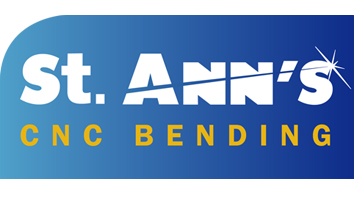Manufacturing Processes
The typical manufacturing processes included in sheet metal productions usually entail distinct specialist processes.
Manufacturing Processes involved can include:
|
|
Design
Good products start with good design, the best designs merge functionality with the most efficient manufacturing processes.
We at St. Ann’s Sheet Metal Company are vastly experienced in working with our medium and liaise closely with our clients to help produce designs that achieve the best results, both in terms of manufacturing cost and the quality of the finished product.
Materials
The main advantage of sheet metal is its ability to be formed and shaped by a variety of processes. The purpose of an item and the durability required from it form the backbone to the decision of which material to use in its manufacturing.
Profiling
Which method used to profile the metal blank depends upon several considerations. Cost, speed and capability are all vital in this choice.
Laser cutting and CNC Punching provide the most effective combinations of value and capability.
Drilling
A tool can be used to drill holes by pecking to let the swarf out. Using a special tapping tool and the ability to control the exact rotational position of the tool with the depth of cut, it can be used to cut screw threads.
Linishing
The operation of polishing is carried out on a linisher. This machine is designed for the polishing of flat objects and carries a flat revolving cloth belt whose surface is impregnated with a suitable abrasive for the material to be cleaned.
Bending
Components may require bending or folding, the machine that bends the metal is called a press brake. One part of the press contains a punch that presses the sheet metal down onto a v shaped die, causing it to bend. The bending can be computer controlled to allow the operator to make a series of bends on a component to a high degree of repeated accuracy. More sophisticated presses are capable of more complex bends and folds.
Inserting
Fitting fixtures and component assembly, may be part of the service clients require. Automated processess can achieve cost effective results in bulk quantities. A press can be used to insert self clinching fasteners, such as nuts, studs, and standoffs, using pneumatic power to deliver speed and operational consistency with only shop air required.
Joining
Which method used to join component parts together depends upon which process can achieve the required result cost effectively. Mig Welding, Tox Jointing and Tig Welding are the most versatile joining processes.
Finishing
Our clients may prefer a complete solution for their product, which includes a surface finish. Plus nearly all parts made from ferrous materials need protection from corrosion as a minimum.




 0115 9269649
0115 9269649 Email Us
Email Us Contact Us
Contact Us